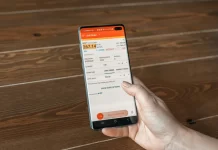You’ve almost certainly heard about Robinhood if you’re even a little bit interested in investing. Robinhood is a financial technology company that offers commission-free trading which attracts a lot of new users.
Since its launch in 2013, the number of active users has exceeded 31 million, which made Robinhood the fastest-growing trading and investing app in history. Robinhood mobile app is simple, straightforward, and allows you to trade stock options and more without commissions.
Through the Robinhood app, you can prepare and give orders to execute trade operations. Robinhood also allows you to manage the status of open trades.
All Robinhood orders can be divided into two general types: market orders and pending orders. However, as Robinhood is aiming at new-to-trading clients, you may not know the difference between them.
And still, they are two major types of orders, and using them the right way, you can increase your chance to succeed.
What is a market order and when it should be used
A market order is a request to immediately buy or sell a financial instrument at the best current market price. Unlike limit orders, which are placed in the order book, market orders are executed instantly at the current price on the market.
The main advantage of a market order is a guaranteed trade and if the execution of the order is a priority for you, regardless of the final price. Market orders should only be used if you’re prepared for slippage and agree to pay a higher price. In other words, market orders are useful if trade execution speed is important to you.
However, the market order has a few significant drawbacks. The first one is that there is a risk of paying more than you planned, or of making much less profit. This usually happens if there aren’t enough trades in the order book, which can lead to a large slippage.
The second disadvantage is the difficulties in planning a trade. You won’t always be able to trade, so you can lose a potentially profitable order. A market order is a basis for many other order types that are usually implemented in most trading platforms.
How a market order is implemented in Robinhood
Robinhood, like most trading platforms, has a market order feature.
However, Robinhood warns that they will automatically convert most market buy orders into limit orders with a 5% collar. This is done to potentially mitigate an upward price movement.
The same situation happens with sell orders. They’re also converted into limit orders with the 5% collar.
The official website also states that the price display yed in the application is the last sale price and may not be the best price available when the order is executed.
A simple example of a market order
For example, let’s imagine company “Z”, which has a buy share price of $20 and a sell share price of $25
200 shares of the company are available at the selling price of $25.
In this case, if there is a market order to buy 500 shares, only the first 200 of them will be executed at $25 apiece.
The remaining 300 shares will be filled at the next best price and in this case, the next orders will probably cost more, for example, $30 or $35, which isn’t that profitable. In this situation, it’s more reasonable to use limit orders.
What is a pending order and how it differs from a market order
The pending order is an order for purchase or sale of the financial instrument in the future under the set price level.
When placing a pending order, the execution price may be higher than the current ASK price or lower than the current BID price. This order type can be divided into several sub-types: limit order, stop order, and stop limit. For example, let’s take the limit order.
- A limit order is a type of order to buy or sell a security at a specific price or below this level. The price of the limit order is determined at your discretion. The limit price is set at your choice. After placing a limit order, a trade can only be executed if the market price reaches your limit price. Therefore, you can use a limit order, to buy/sell with a price above or below the current market price.
- A buy limit order is a pending order which activates the purchase of an asset if its price falls to or below the specified price. The trader places such an order with the expectation that the price of the asset will rise when the order is triggered.
- A sell limit order is a pending order, which opens a deal to sell when the rate reaches a certain or higher value. A trader places such an order expecting that after it’s triggered, the price of the asset will decrease.
The difference between a pending order and a market order
The first difference is that with a market option, the order is applied instantly and is sent to your brokerage with the click of a button.
When using a pending option, the order will remain on the server of your broker’s trading platform until a specific quote triggers the order.
Also at trade by the market order slippage that in the pending order is excluded. But in the case of a market order, the chance of a successful order is much higher.
Splaitor doesn’t provide any kind of investing, money management, or financial advice. The information posted above is for general interest purposes only and can’t be considered as public or personal advice. Read our Disclaimer to learn more.






